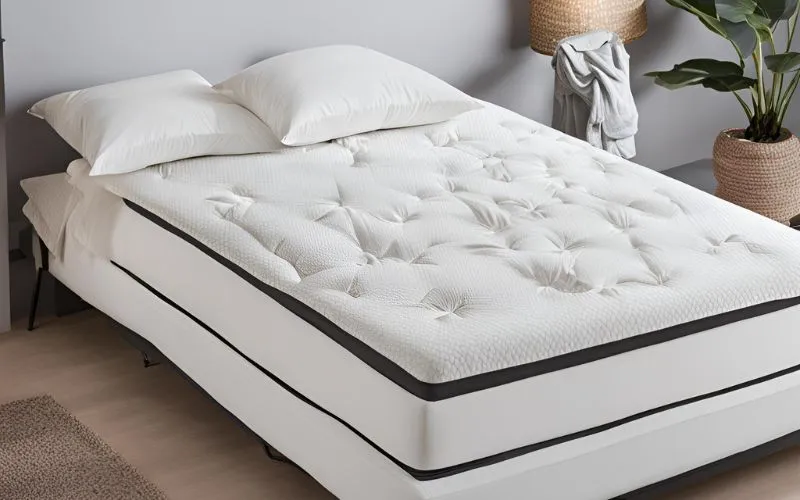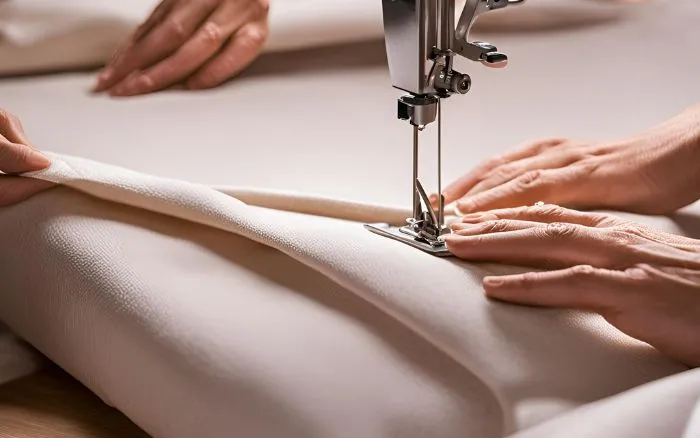Understanding the Benefits of Latex Mattresses for Pain Relief

Introduction
Welcome to our comprehensive guide on latex mattresses for pain relief. In this article, we will delve into the concept of latex mattresses, their benefits, and how they provide pain relief. We will also explore the factors to consider when choosing the right latex mattress and the best practices for maintaining and caring for it. Whether you are seeking relief from back pain, pressure points, or motion disturbance, this guide will provide you with the valuable information you need to make an informed decision about latex mattresses for pain relief.
What is a Latex Mattress?
Natural Latex vs. Synthetic Latex
When it comes to latex mattresses, consumers are faced with a choice between natural latex, derived from rubber tree sap, and synthetic latex, which is made from petrochemicals. Let’s delve deeper into the differences between these two types of latex:
- Material Source: Natural latex is obtained from the sap of rubber trees, making it a sustainable and eco-friendly choice.
- Quality and Durability: Natural latex boasts exceptional durability, breathability, and resilience, making it a long-lasting and supportive option for mattresses.
- Health and Comfort Benefits: It provides a naturally hypoallergenic and antimicrobial sleeping surface, making it an excellent choice for individuals with allergies or asthma.
- Manufacturing Process: Synthetic latex is produced using petrochemicals, and while it is more affordable, it may lack the natural benefits of its counterpart.
- Performance and Environmental Impact: Synthetic latex mattresses may not offer the same breathability and eco-friendly properties as natural latex ones. Additionally, some individuals may have sensitivities to the chemicals present in synthetic latex.
- Considerations: When making a purchase decision, consumers should consider the trade-offs between cost savings and potential differences in comfort, health benefits, and environmental impact.
Types of Latex Mattresses
Latex mattresses are available in two primary types: Dunlop and Talalay. Each type has distinct characteristics that cater to different sleep preferences and needs.
Dunlop Mattresses
- Dunlop mattresses are crafted using a traditional method that produces a denser and firmer mattress.
- Known for their durability and resilience, Dunlop mattresses are an excellent choice for individuals seeking robust lumbar support and a stable, solid feel.
- The composition of Dunlop mattresses makes them ideal for sleepers who prefer a firm sleeping surface and desire natural spinal alignment.
Talalay Mattresses
- Talalay mattresses, made using a modern and innovative process, offer a softer and more buoyant sensation.
- These mattresses provide superior pressure relief and enhanced cushioning, designed to accommodate sleepers seeking a plush and comfortable sleeping experience.
- The airy and breathable nature of Talalay mattresses promotes airflow and temperature regulation, contributing to a cooler and more refreshing sleep environment.
When choosing between Dunlop and Talalay mattresses, it is essential to consider your comfort preferences, sleeping habits, and overall health needs to select the mattress type that best suits you.
How Do Latex Mattresses Provide Pain Relief?
Support and Alignment
Latex mattresses excel in promoting proper spinal alignment and support, which are crucial factors in mitigating back pain. The natural resilience and firmness of latex ensure that the body is adequately supported, reducing the strain on the musculoskeletal system and maintaining a healthy sleep posture.
Let’s delve deeper into the exceptional support and alignment properties of latex mattresses:
- Spinal Support: Latex mattresses are designed to maintain the natural curve of the spine, providing optimal support to each section of the back. This helps in preventing discomfort and promoting a more restful sleep experience.
- Pressure Distribution: The inherent flexibility of latex allows it to contour to the body, effectively distributing the body weight and relieving pressure points. This distributed pressure minimizes the likelihood of waking up with aches and pains.
- Sleep Posture: By maintaining proper spinal alignment, a latex mattress encourages a healthy sleep posture, which contributes to overall musculoskeletal health and reduces the risk of developing chronic back issues.
Furthermore, the hypoallergenic and dust mite resistant nature of latex adds another dimension of support by creating a healthier sleep environment, particularly beneficial for individuals with allergies or respiratory sensitivities.
Pressure Point Relief
One of the key benefits of latex mattresses is their ability to relieve pressure points, particularly for side sleepers. The responsive yet yielding nature of latex evenly distributes body weight, alleviating pressure in sensitive areas such as the hips and shoulders, leading to a reduction in discomfort and improved sleep quality.
Motion Isolation
Latex mattresses are renowned for their exceptional motion isolation properties, making them ideal for individuals who share a bed. The unique construction of latex, with its inherent resilience and elasticity, effectively absorbs movement, ensuring minimal disturbances from a partner’s actions. This leads to an undisturbed and peaceful sleep experience. The motion isolation capabilities of latex mattresses can be attributed to the following factors:
- Material Density: Latex mattresses have a high material density, which allows them to effectively absorb and dampen any motion across the surface.
- Structure: The cellular structure of latex, especially in natural latex mattresses, contributes to superior motion isolation by minimizing the transfer of movement.
- Zoned Support: Some latex mattresses are designed with zoned support, where specific areas provide targeted support to minimize the impact of movement in those areas while maintaining overall comfort.
Benefits of Latex Mattresses for Pain Relief
Hypoallergenic Properties
Latex mattresses are renowned for their hypoallergenic properties, which make them an ideal choice for individuals with allergies or respiratory sensitivities. The natural resistance of latex to dust mites, mold, and other allergens creates a healthier sleep environment that can significantly benefit those prone to allergies.
- Resistant to Dust Mites: Latex mattresses are inherently resistant to dust mites, making them a suitable option for individuals who suffer from dust mite allergies. The structure of latex prevents the accumulation of dust mites, thereby reducing the potential triggers for allergic reactions.
- Mold Resistance: The anti-microbial properties of latex contribute to its resistance to mold, providing a safeguard against mold-related allergies. This durability against mold is advantageous for individuals seeking a hypoallergenic sleep surface.
- Allergen Barrier: The dense and resilient nature of latex acts as a natural barrier against various allergens, including pet dander and other common triggers. This feature can be particularly beneficial for those with multiple sensitivities or allergies.
By offering a hypoallergenic sleep environment, latex mattresses promote improved respiratory well-being and a reduction in sleep disturbances caused by allergens. This feature enhances the overall sleep quality, making latex mattresses a favorable choice for individuals seeking a healthier and more comfortable sleep experience.
Durability and Longevity
Latex mattresses are renowned for their exceptional durability and resilience, providing long-lasting comfort and support for sleepers. Here are some key points to consider when discussing the durability and longevity of latex mattresses:
- Materials: Latex mattresses are made from natural, synthetic, or a blend of both materials. Natural latex is derived from the sap of rubber trees, making it biodegradable and environmentally friendly. Synthetic latex, on the other hand, is derived from petrochemicals and may have a shorter lifespan.
- Construction: The construction of latex mattresses contributes to their durability. Talalay latex, known for its airy, buoyant feel, undergoes a vacuum-sealing process, enhancing its longevity. Dunlop latex, with its denser composition, is also highly durable and resilient.
- Resilience: Latex mattresses maintain their supportive properties over time, offering consistent pressure relief and spinal alignment. This resilience contributes to their longevity, ensuring that they provide lasting relief from pain and discomfort.
- Warranty: Many latex mattresses come with extended warranties, reflecting the manufacturer’s confidence in the product’s durability. These warranties often cover a substantial period, affirming the long-term quality and performance of latex mattresses.
- Care and Maintenance: Proper care and maintenance can further enhance the longevity of latex mattresses. Regular rotation, adequate support, and cleaning practices can extend their lifespan, providing enduring comfort and value for sleepers.
Environmental Impact
Natural latex mattresses have a significantly lower environmental impact compared to other types of mattresses. Here are some key points to consider:
- Sustainability: Latex mattresses are crafted from renewable resources and biodegradable materials, making them an eco-friendly choice for environmentally conscious consumers.
- Reduced Carbon Footprint: The production process for natural latex mattresses involves minimal energy consumption and emits fewer greenhouse gases, contributing to a reduced carbon footprint.
- Eco-Friendly Disposal: When it comes to disposal, latex mattresses can be broken down naturally, minimizing their ecological impact and reducing waste in landfills.
Moreover, the sustainable nature of latex mattresses aligns with the growing emphasis on environmental responsibility and the desire for sustainable consumer products. By choosing a natural latex mattress, individuals can make a positive impact on the planet while enjoying high-quality sleep.
Choosing the Right Latex Mattress
Firmness Levels
When it comes to choosing a latex mattress, understanding the firmness levels is crucial for finding the perfect balance of support and comfort. Firmness is subjective and varies from plush to extra firm, accommodating a wide range of sleep preferences and body types. Let’s delve deeper into the different firmness levels and how to determine the most suitable one for your individual needs:
- Plush: This level offers a luxurious, cushioned feel with a gentle sink-in effect. It’s ideal for side sleepers and those who prefer a softer sleeping surface.
- Medium:Provides a balanced combination of support and softness, making it suitable for various sleeping positions and individuals with average body types.
- Firm: Offers a sturdy feel with minimal sink-in, providing excellent support for back and stomach sleepers and those with larger body types.
- Extra Firm: This level provides the highest level of support and minimal sink-in, catering to individuals who require substantial support and prefer a very firm sleeping surface.
Factors such as body weight, sleeping position, and personal preferences contribute to determining the most suitable firmness level. It’s essential to understand how each firmness level affects spinal alignment, pressure relief, and overall comfort, ensuring a restful and rejuvenating sleep experience.
Thickness and Density
When it comes to latex mattresses, the thickness and density play a significant role in determining the overall feel, support, and comfort. Understanding these factors is essential in making an informed decision about the ideal mattress for individual sleep needs.
The thickness of a latex mattress contributes to the overall sensation and support it provides. Consider the following points:
- Thicker layers often result in a more luxurious and cushioned feel, especially for those who prefer a plush sleeping surface.
- Increased thickness can also enhance the durability and longevity of the mattress, making it a worthwhile investment.
- For individuals with specific health or comfort requirements, a thicker latex mattress can offer enhanced pressure relief and body contouring, promoting better sleep quality.
- When comparing thickness options, it’s important to consider personal preference, sleeping position, and any existing back or joint issues to determine the most suitable thickness level.
The density of latex in a mattress influences its supportive properties and overall performance. Here’s a closer look at the significance of density:
- Density levels in latex mattresses cater to specific comfort requirements and sleeping preferences.
- Higher density latex provides firmer support and is ideal for those who require additional spinal alignment and support.
- Lower density latex offers a more plush and contouring feel, making it a great choice for individuals seeking a softer sleeping surface.
- Understanding the interplay between thickness and density is crucial in selecting a latex mattress that aligns with individual sleep needs and preferences.
Certifications and Quality Standards
When choosing a latex mattress, it’s important to look for certifications and quality standards that ensure the product meets stringent criteria for safety and performance. Here are some key certifications to keep an eye out for:
- OEKO-TEX® Standard 100: This certification guarantees that the latex mattress is free from harmful substances and has undergone rigorous testing for safety.
- eco-INSTITUT: Products with the eco-INSTITUT certification have been tested for emissions and pollutants, providing assurance of good indoor air quality.
- GOLS (Global Organic Latex Standard): For those seeking an organic latex mattress, the GOLS certification ensures that the latex used is organically produced, with strict criteria for environmental and social responsibility.
- GOTS (Global Organic Textile Standard): This certification applies to the cover of the mattress, ensuring that it is made from organic fibers and meets stringent environmental and social criteria.
These certifications not only demonstrate the absence of harmful chemicals but also validate the overall environmental and ethical impact of the mattress. When a latex mattress bears these certifications, it provides consumers with confidence in their purchase, knowing that they are investing in a product that meets high-quality and sustainability standards.
Maintaining and Caring for Your Latex Mattress
Cleaning and Maintenance Tips
To preserve the condition of your latex mattress, regular maintenance is essential. Here are some detailed cleaning and maintenance tips to keep your mattress in top condition:
- Spot Cleaning: Use a mild detergent to spot clean any areas that require attention. Blot the area gently and allow it to air dry completely before reapplying bedding.
- Avoiding Excessive Moisture: Keep your mattress dry by using a moisture barrier and ensuring proper ventilation in the room.
- Using a Mattress Protector: Invest in a high-quality mattress protector to shield against stains and spills. This will also help maintain the warranty of your mattress.
- Periodic Rotation: Rotate your mattress regularly to ensure even wear. This simple step can extend the lifespan of your mattress significantly.
- Airing Out: Allow your mattress to air out by removing the bedding and opening windows if possible. This will help eliminate moisture and odors, keeping your mattress fresh and clean.
Protective Measures
When it comes to protecting your latex mattress, there are several important measures you can take to ensure its longevity and performance. By implementing the following protective measures, you can safeguard your mattress from various environmental factors and maintain its pristine condition:
- Use a Breathable Mattress Protector: Invest in a high-quality, breathable mattress protector that is specifically designed for latex mattresses. This protective layer acts as a barrier against dust, moisture, and allergens, preventing them from seeping into the mattress and causing damage.
- Maintain a Well-Ventilated Sleeping Environment: Proper airflow is essential for maintaining the integrity of your latex mattress. Ensure that your sleeping environment is well-ventilated to prevent moisture buildup, which can compromise the mattress’s quality over time.
- Avoid Direct Sunlight Exposure: Prolonged exposure to direct sunlight can lead to discoloration and deterioration of latex materials. Keep your mattress shielded from direct sunlight to preserve its appearance and structural integrity.
By incorporating these protective measures into your mattress care routine, you can significantly extend the lifespan of your latex mattress and continue enjoying its exceptional comfort and support for years to come.
Conclusion
In conclusion, latex mattresses offer a host of benefits, particularly in alleviating pain and promoting restful sleep. Their innate qualities, eco-conscious attributes, and customized support features make them a compelling choice for individuals seeking genuine pain relief and sustainable bedding solutions. By understanding the nuances of latex mattresses and their impact on pain relief, consumers can make informed decisions that enhance their sleep quality and overall well-being.




